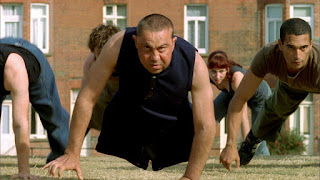Steven Berkoff
Steven Berkoff:
Q.1) Place and date of birth:
- On 3 August 1937, Berkoff was born Leslie Steven Berks in Stepney in the East End of London.
Q.2) Place and date of death:
- Steven Berkoff is still active, and some of his work pieces and other joint projects are still involved.
Q.3) Four facts about the practitioner's family:
- His family, with origins in Romania and Russia, were Jewish.
- The family name was originally Berkoff, but in order to help the family's assimilation into Britain, it was anglicised to Berks.
- Subsequently, Berkoff changed his surname to the original family name legally, and went by his middle name.
- He was the son of a housewife, Pauline (née Hyman), and of a tailor, Alfred Berks.
Q.4) Three pieces of work by the practitioner/s:
- The Metamorphosis (1969)
- In the Penal Colony (1969)
- The Trial (1971)
Question.5) Three facts about their education:
- The school's Steven Berkoff attended three were in England and one was in France.
- Two of the schools specialised in physical theatre, as both offered a two-year technical and intensive course that emphasises the body, movement and space as an entry point in theatrical performance and prepares its students for collaborative development. Mimodynamics is called this form.
- One school was a church of England.
Question 6: Three facts about the historical era they lived through:
- Then, in the early 1930s, the economy was hit by depression at the time Steven Berkoff was born, which was 1937.
- By the beginning of 1933, unemployment was 22.8 percent in Britain. Unemployment, however, declined dramatically in 1933, 1934 and 1935.
- During the 1930s, living standards also grew significantly for most people with a job, world trade slumped, rates fell, credit dried up, and many countries secured their domestic economy by taxing foreign imports. The value of British exports decreased by half, plunging its manufacturing areas into poverty: unemployment more than doubled to 20 % by the end of 1930.
Question 7: At least two other people with whom they worked creatively:
- The work of Berkoff is inspired by Greek theatre, Japanese Noh and Kabuki, Shakespeare, the music hall of the East End and its Jewish roots, and by the techniques of practitioners such as Artaud and Brecht. Stanislavski and the techniques used by Lecoq may have included his own preparation for actors.
- He has been in major roles in Rambo, Beverly Hills Cop, Octopussy and recently The Girl with the Dragon Tattoo, Berkoff also has a film career, as well as works by Kubrick (Barry Lyndon and A Clockwork Orange) and Antonioni.
Question 8: Themes in their work:
- The common themes of Berkoff 's extensive physical speech, transition, and over-exaggerated experimental focus on the spoken word should be used as a way of evoking and exaggerating the impulses of the actor when dealing with the role.
Question 9) Three relevant images:
The Image on the left hand side is a scene from 'The Trial' Which is about the ground-breaking adaptation of Franz Kafka's The Trial by Steven Berkoff tells the tale of Joseph K., a man convicted of a crime that is never revealed to him. This visually striking portrayal, filmed live in Tokyo, is based on the 1991 production at the National Theatre in London and portrays the tortuous attempt of Joseph K. to uncover the facts behind his detention.
This image on the right hand side is a picture of Steven Berkoff playing his role Orlov in 'Octopussy' which the short summary of the film is that there is a fake Fabergé egg, and the death of a fellow Agent, led James Bond to discover an international jewel-smuggling operation being used to conceal a nuclear attack on N.A.T.O. powers, led by the enigmatic Octopussy.
This image on the right hand side is a picture of Steven Berkoff playing his role Orlov in 'Octopussy' which the short summary of the film is that there is a fake Fabergé egg, and the death of a fellow Agent, led James Bond to discover an international jewel-smuggling operation being used to conceal a nuclear attack on N.A.T.O. powers, led by the enigmatic Octopussy.
This picture in the middle shows Steven Berkoff engaging in a performance and acting out his heart because he has such a guided passion for it and it is seen by his work pieces and himself because he understands it clearly.
Question 10) Conclusive statement about the contribution of this practitioner to the world of performing arts:
- Steven Berkoff is one of the most prominent figures in the theatre and film world, both as an actor and as a visionary writer and producer, spearheading the idea of 'complete theatre'-a form and style that is now commonly imitated in both professional and amateur theatre.
- The theory of Steven Berkoff was that the public should be targeted within the first ten seconds. The visceral, dynamic experience should be blindingly evident because I want to make the audience see something that is outside of this universe and is something out of the ordinary theatre techniques.
- Steven Berkoff uses a range of stylised gestures, including slow motion and robots, exaggerated facial expressions and voice work, which also involves direct asides and drawings, minimalist costume usage and exaggerated and glamorous mime, often using masks.






Comments
Post a Comment